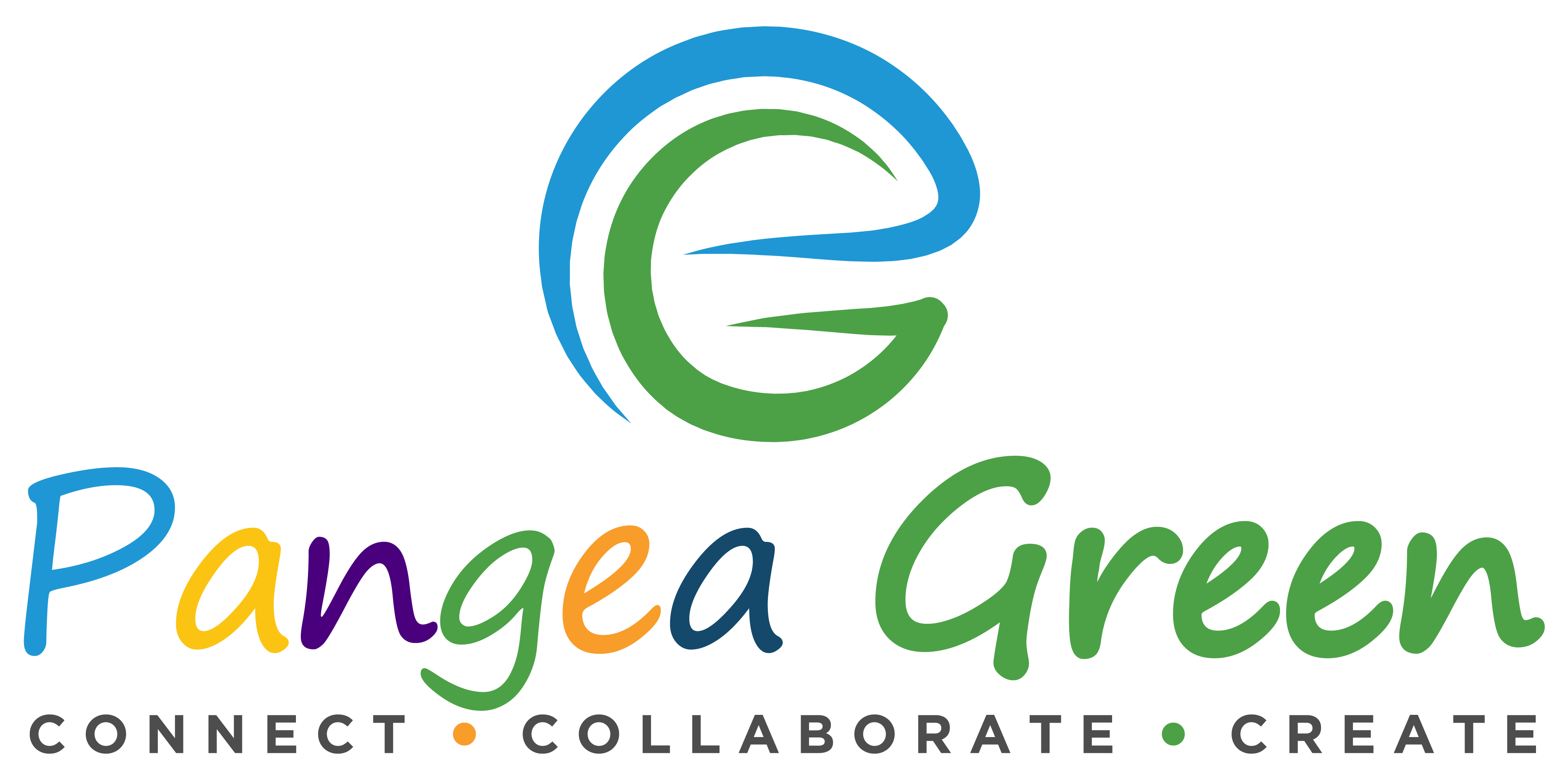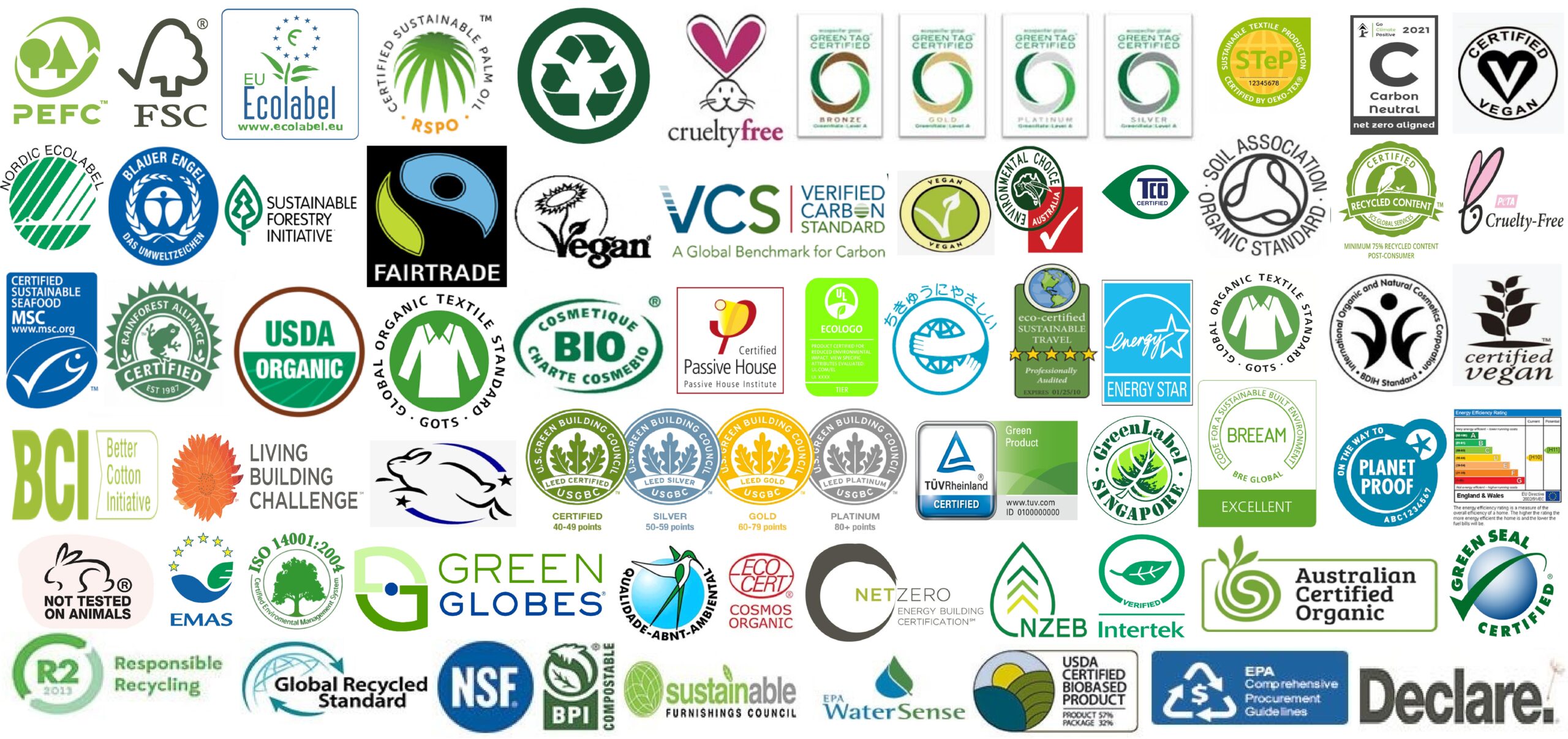Products and services claiming specific environmental and social benefits are growing more than even, but in this fast-growing green-market is difficult to know which product truly delivers all its promises or it is just greenwashing marketing. Eco-labels are a good indication of the veracity of the commitments and achievements claimed by these products. In this post you will learn what are eco-labels, the 2 min categories of eco-labelling, The importance of eco-labelling, how to recognise them and what are its benefits from both, the consumer and the business perspectives.
What are Eco-Labels
Eco-labels are marks placed on product packaging and in e-catalogs that can help consumers, businesses and institutional purchasers to identify those products that meet specific environmental performance criteria and therefore, these products are supposed to be less harmful for the environment.
Eco-labels can be:
- single-attribute which are the ones that focus on:
- a single lifecycle stage (i.e. the use phase) of a product/service
- a single environmental issue (i.e. VOC emissions).
- multi-attribute which are those that:
- focus on the entire lifecycle (manufacture, use, maintenance, disposal) of a product/service
- address many different environmental issues (i.e. energy use, chemical use, recycling, and more)
From an accreditation point of view, eco-labels can be owned by government agencies, non-profit environmental advocacy organisations, or private sector entities. In many instances, countries will use different eco-labels in accordance with the country standards and regulations. However, there are some eco-labels that will transcend the frontiers of the countries and become internationally used. Those eco-labels will reach that status when its criteria is standardised worldwide.
Eco-labels can also be classified by category of products, such as textiles, appliances, chemicals, wood products and bi-products, foods, furniture or even buildings. When an eco-label is developed for a specific product category, the first step is to define what the product should deliver from an ESG point of view, as in setting a list of common rules. This process normally takes place involving different interested parties, such as industry bodies, NGOs, researches and even costumer’ organisations’ representatives.
The importance of Ecolabelling
Everyday, uncountable number of products of different variety and characteristics are manufactured around the world. Each of these products, including its packaging, no matter the size, the material or its function is leaving an ecological footprint trace along its entire lifecycle (from cradle to grave). They are made from materials which its extraction greatly contribute to resource depletion, the transformation of natural environments and biodiversity loss, and its processing leads to atmospheric emissions, water pollution and soil contamination, with an accumulation of toxic chemicals in our environment and subsequently in our bodies, in detriment of our health.
Fortunately, we are becoming conscious of our impact on our surrounding environment in which we live and, as consumers, we have started seeking out for products that promise less environmental damage and high ESG performance standards. Eco-labels certify those ESG performance based on pre-established ESG criteria.
What this means is that as consumers, eco-labels can help us make better sustainable purchasing decisions when we know what the eco-label means. For businesses, eco-labels are tools that verifies their ESG performance, sets sustainable procurement criteria for its partners, contractor, vendors and suppliers, and also allows better communication and marketing of the business environmental and social efforts and achievements of a given product. Governments, use these tools to encourage the behavioural change of producers and consumers towards a long-term sustainable society.
How to recognise an Eco-label
How eco-labels look like? Eco-labels are usually pictograms. If the product hold one eco-label normally means that the product has achieved the standardised criteria that the specific Eco-label certifies through an auditing process. However, other more complex eco-labels’ pictograms are accompanied by an additional ranking coding. In those types of eco-labels, you should get informed on what does the ranking mean to you in your sustainable journey as a conscious consumer. As we all know, platinum award always means more than bronze award, to name an example. As a consumer, if you are fully embedded in a sustainable lifestyle, choosing a product awarded with a bronze eco-label might be lowering your standards. Therefore, it is very important for you to do you own homework to know exactly what are you purchasing.
Putting this into context, if you are purchasing a box of A4 paper sheets, you should make sure that an eco-label that certifies the correct management of forest products exist. The most renowned ones are SFI, FSC or PEFC which regulates the source of wood pulp. You might go even further and ensure that the paper does not come from forest resources at all, which you then might have to look for the recycled materials eco-labels. However, if you are looking for an all-round sustainable manufacturing process that reduces the amount of water and energy spent, and its source, the chemicals used, or even if the paper pulp was even processed from previously recycled wood waste or used paper, you should check for life cycle eco-labels that will audit those parameters during the certification process. In our example, eco-labels such as the EU Eco-label, the Nordic Swan or the Blue Angel are all government certifications audit the entire manufacturing process. However, other non-profit organisations or even private certification agencies, such as Ecologo, Paper Profile or CCB Standards, can also assure high standards in reducing the carbon footprint of the product.
Beware of the manufacturers that praise high commitments to sustainability, uses natural environmental features in their marketing strategy or even produces pseudo eco-labels with fancy green slogans. If you are not sure whether that eco-label is faithful or not, you can do a quick check using an eco-label directory that governmental bodies publish, such as the European Commission or the US Environmental Protection Agency. However, there are also very reliable private eco-label directories, such as the Ecolabel Index or the Global Ecolabel Network.
Advantages and Disadvantages
The below are the most relevant advantages and disadvantages of using eco-labels, from both a consumer (individual or company business) point of view but also from a product manufacturer perspective:
The most common disadvantages of ecolabels include:
- Lack of international standardisation to certify similar characteristics or product category
- Eco-labels focusing on one single aspect of the product disregarding the rest of the manufacturing process and the entire life cycle
- Potential redundancy if a number of ecolabels certify the same characteristics
- Potential greenwashing mascaraed by unregulated pseudo eco-labels
- Consumer confusion on whether the product aligns with his/her sustainable requirements
- Difficulty in proving an unbiased, measurable, standardised positive impact
- Prohibitive costs for certification, especially for smaller producers
- Provide a basis for price markups
- Consumer/producer disinterest in paying a premium for sustainable products
Due to the exponential growth of eco-labels as a market-based instrument to promote pollution prevention and sustainability, product manufacturers and retailers tend to use any ecological aspect of a product as a marketing tool disregarding the non-sustainable aspects of their product. This situation might allow manufacturers to switch the focus from their environmental shortfalls and gaining unsubstantiated credibility.
Moreover, due to the amount of eco-labels available in the market, countable in hundreds, the efforts made by truly sustainable companies have been diluted in an ocean of opportunists taking advantage of product green-washing. Pangea Green mission is to bring those sustainable products and services to the consumer’s front line.
The most common advantages of ecolabels include:
- Stimulation of innovation as more sustainable products are developed
- Development of sustainable markets that cater conscious consumers
- Opportunity for education and growth
- Emerging sustainable value chains and new networks
- surveillance of environmental management and protection
- Influencing consumer behaviour towards more sustainable products
- Economic and production efficiency improvements
- Budget allocation for environmental management and improvement
- Support to the Sustainable Development
Eco-labelling has gained its reputation as the international language to communicate customers about the organisation’s environmental and social efforts, and consumers are able to make more informative decision on with regards to their consumption pattern. Moreover, Eco-labelling help businesses, manufacturers, suppliers and vendors to easily prove certain environmental criteria requested by existing and potential investors during ESG rating, over their competitors. Consequently, eco-labels have set the stimuli needed to improve ESG criteria of products and services and rise the bar of what is acceptable and not acceptable with respect to the environmental and social impact caused by these businesses.
Conclusion
Eco-Labelling should not just focus on one single ecological characteristic; it should look at the wider environmental impact of the products life cycle, from cradle to grave, looking at the entire supply chain:
- Sources of energy and other resources such as water,
- Renewable, recycled and sustainably managed sources of materials,
- Embodied carbons computation,
- Eco-design, improving and extending the product useful life,
- Ability to reuse, recycle, or repurpose.
The bottom line is that for the time-being, the advantages of eco-labelling outranges the disadvantages, while consumers like you are increasingly becoming more conscious of the environmental impact of products, and demanding manufacturers to do something about it. This will allow governments and societies to rise the bar for the next generation of sustainable products and their ESG criteria.
Was this information useful? Would you like us to expand more on any specific item? Leave us a comment!

